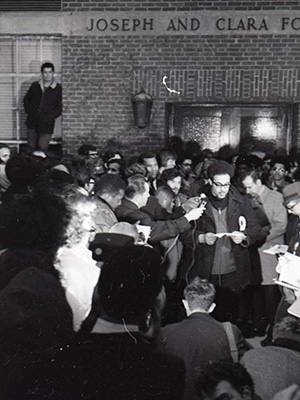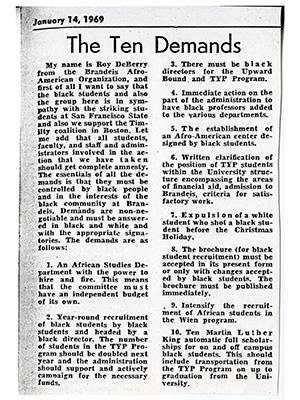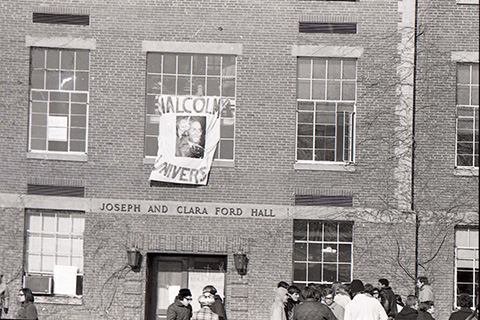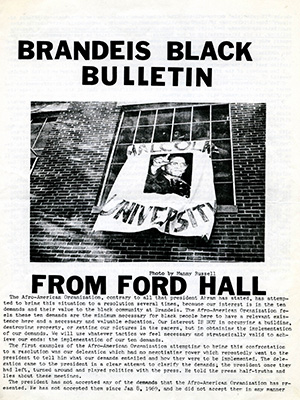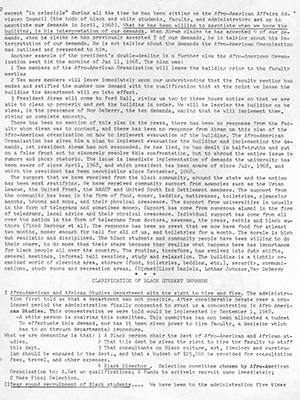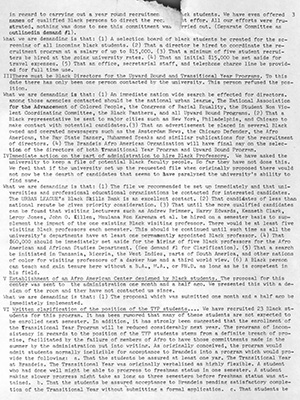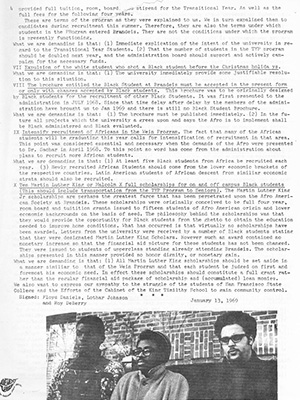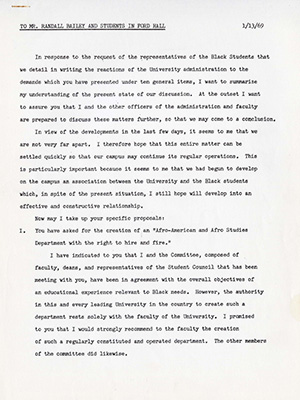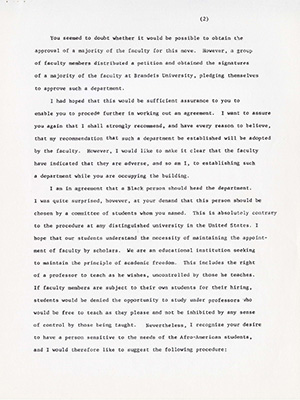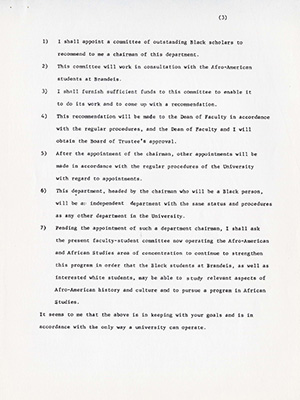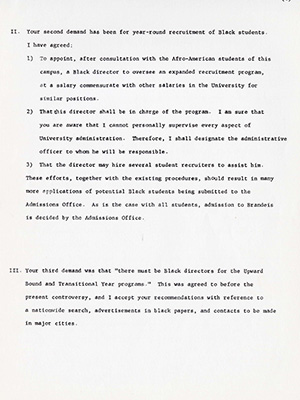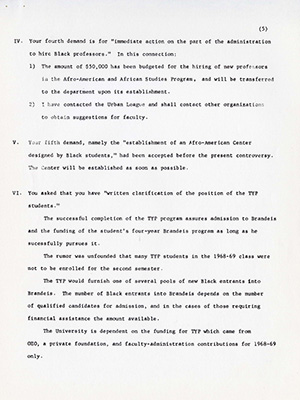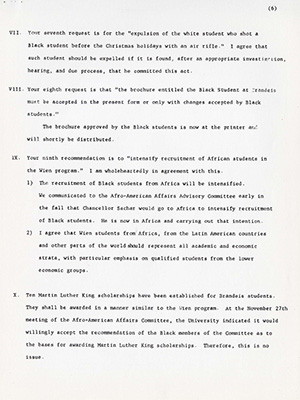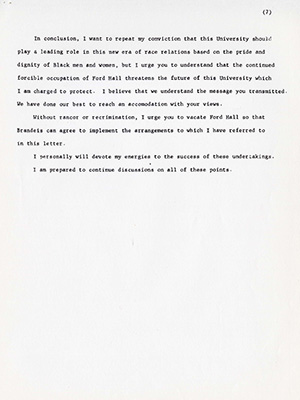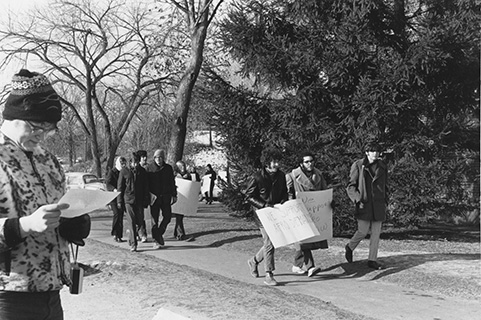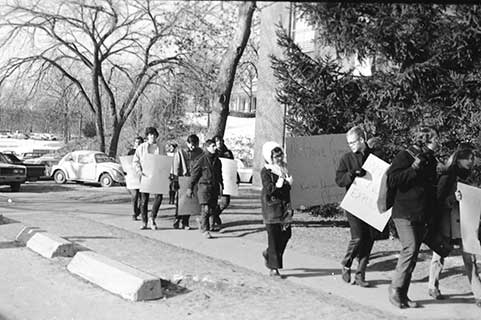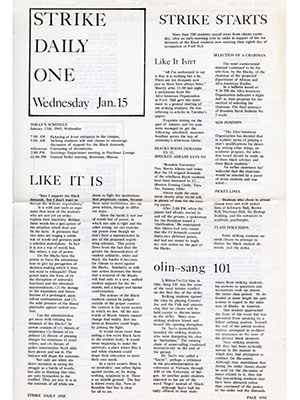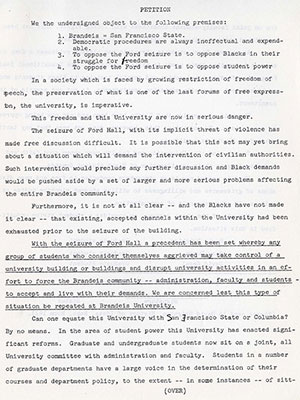Ford Hall 1969
The end of the 1960s was a time of large-scale worldwide protests and social strife. Colleges and universities were not immune to these protests, as students fought for social change both on and off campus. Black students in the US especially protested for a more inclusive academic and social environment at colleges and universities, in particular advocating for the creation of Black studies departments and Black student centers.
In April of 1968, Black students at Brandeis pressed the university to implement such changes and presented fourteen demands to President Abram Sachar, which included greater recruitment of Black students and the creation of an African and Afro-American Studies department. The next several months saw little and slow progress in implementing these demands by Brandeis administration and faculty. However, the following academic year, Brandeis admissions representatives did travel to schools in the South in an effort to recruit more Black students. In addition,the Faculty Educational Policy Committee (EPC) considered and approved a proposal for two new concentrations, African Studies and Afro-American Studies, to be instituted in September 1969.
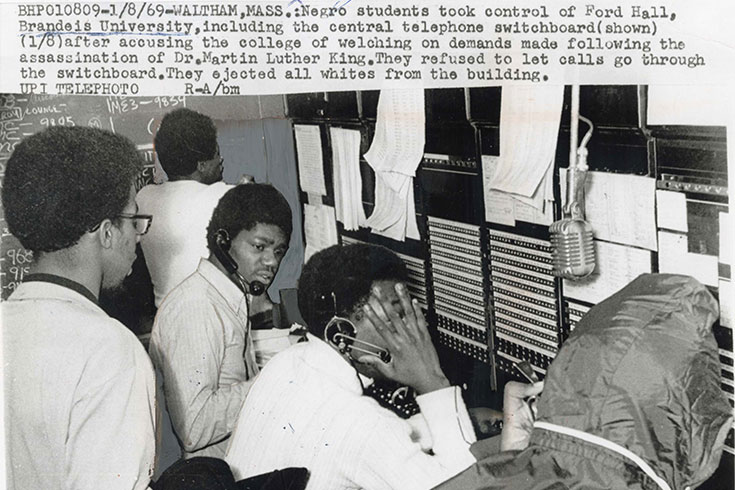 Black students inside Ford Hall's communication room after taking over the building.
Black students inside Ford Hall's communication room after taking over the building.
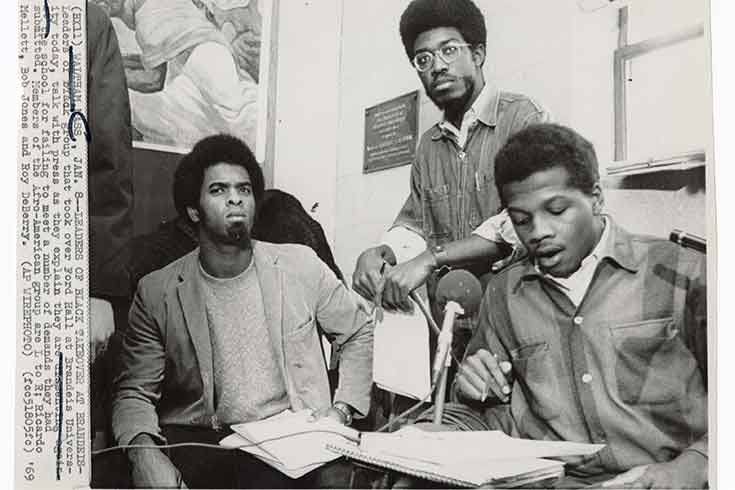 The leaders of the Ford Hall occupation speak to the press from inside Ford Hall. (left to right: Ricardo Mellett, Bob Jones, and Roy DeBerry)
The leaders of the Ford Hall occupation speak to the press from inside Ford Hall. (left to right: Ricardo Mellett, Bob Jones, and Roy DeBerry)
Students did not find these actions or their implementation to be a sufficient fulfillment of their demands. In the afternoon of January 8, 1969, 65 Black students of the Brandeis Afro-American Organization (BAAO), two-thirds of the university’s Black student population, occupied Ford Hall. As Ford Hall was the building which housed the university’s communications center, the occupation almost completely disrupted the university’s communication capabilities. Using the communications system, these students sent ten demands to the Brandeis administration and stated that they would not leave the building until the administration met their demands. Negotiations between the students and the administration over the fulfillment of these demands began early the next morning and would continue over the following days as the administration continuously refused to meet certain aspects of the students’ demands. Disagreement largely centered around the establishment of an autonomous Afro-American studies department and the method for choosing the director and faculty for the department.
Brandeis Black Bulletin
This is the first Brandeis Black Bulletin (one of four) produced by the protestors in Ford Hall to keep the campus community informed of their demands, their actions, and the actions of the administration. In this particular bulletin, the authors devoted much of the bulletin to a clarification of the students' ten demands.
Administration's Response
The administration's response to the students' ten demands (January 13, 1969).
Outside of Ford Hall, the protest was met largely with disapproval and opposition from the administration and faculty, who condemned the takeover and demanded that the students leave the building.1 While a majority of the student body did not visibly show support for the protest, a small, but significant portion of the student population, roughly 200-300 white students, actively supported the takeover, engaging in their own occupation in the Bernstein-Marcus lobby, forming picket lines, and holding an educational strike in support of the BAAO.2
Aftermath
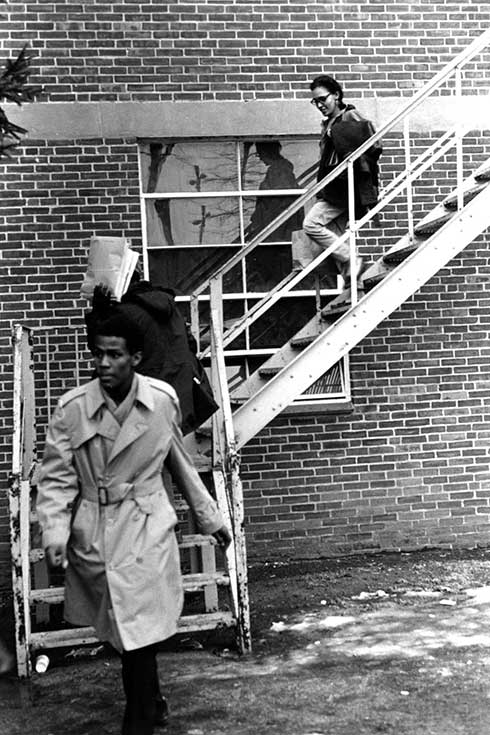 Students leaving Ford Hall at the end of the takeover.
Students leaving Ford Hall at the end of the takeover.
After 10 days of protest and negotiation, the students occupying Ford Hall left the building on January 18. A Justice article published on January 21, 1969 asserts that the protestors ended their occupation without any real agreement from the administration regarding their demands. However, the leaders of the occupation claimed that they did not exit the building until Abrams agreed to demands two through ten and signed a letter stating his acceptance. Students would hold protests a couple months after the Ford Hall takeover to press for the immediate implementation of the Black students’ demands, which had yet to be realized. President Morris Abram, who had been inaugurated in October of 1968, resigned from the presidency in February of 1970.
In the end, an Afro-American and African Studies Department was created at Brandeis, with the faculty providing their official approval of its creation in April of 1969. The Brandeis AAAS Department, now one of the top AAAS departments in the country, exists because of those Black students who fought to improve their educational opportunities in the face of opposition.
Footnotes
- "Ford Occupied: Talks Progress: More Meetings Slated for Tonight,” The Justice vol. 21, no.13 (Jan. 10, 1969); Timeline: Ford Hall, Student Activism Folder
- Brandeis University Student Council Bulletin, Student Activism at Brandeis, Box 1: Ford Hall folder (part 1 of 3) 1969-1999; Petition circulated by graduate students, Student Activism at Brandeis, Box 1
